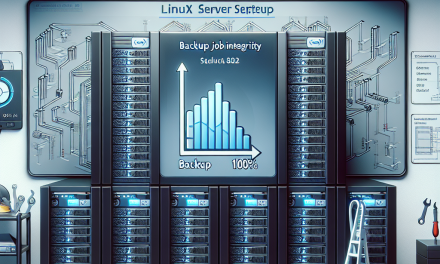In the ever-evolving landscape of IT, server security is paramount. As cyber threats grow increasingly sophisticated, the importance of regular updates and patches has never been more critical. Particularly for Linux servers, effective patch management is essential to ensure system integrity and security. In 2023, numerous tools are available to assist system administrators in maintaining their Linux environments. In this article, we’ll explore some of the best Linux server patch management tools to streamline your operations and safeguard your infrastructure.
Understanding Patch Management
Before diving into the tools, let’s clarify what patch management involves. Patch management is the process of identifying, acquiring, installing, and verifying patches for software and applications. These patches can address security vulnerabilities, fix bugs, and improve overall system performance. An effective patch management strategy minimizes risks associated with outdated software while ensuring compliance with security policies.
Why Use Patch Management Tools?
- Security: Regular updates close vulnerabilities and reduce the risk of security breaches.
- Compliance: Many regulations require organizations to keep their software up to date.
- Stability: Patches often fix bugs and enhance system stability.
- Automation: Tools can automate the patching process, saving time and reducing human error.
Top Linux Server Patch Management Tools in 2023
1. Red Hat Satellite
Red Hat Satellite is a comprehensive lifecycle management tool designed for managing Red Hat Enterprise Linux systems. It provides a straightforward solution for patch deployment, system provisioning, and ongoing management.
Key Features:
- Centralized management of multiple systems.
- Patch content management and rollbacks.
- Integration with Ansible for automation.
- Compliance reporting and auditing capabilities.
2. Landscape
Landscape is developed by Canonical and is focused on managing Ubuntu systems. This tool helps administrators manage updates, track software packages, and monitor system health.
Key Features:
- System monitoring and reporting.
- User-friendly web interface.
- Scheduling updates and reboot management.
- Integration with Canonical’s package repositories.
3. Puppet
Puppet is a widely-used configuration management tool that can automate the application of patches across your Linux environments. Using a model-driven approach, Puppet allows administrators to define the desired state of their systems.
Key Features:
- Code-driven automation with Puppet manifests.
- Reporting and compliance tracking.
- Integration with cloud platforms.
- Supports both agent and agentless environments.
4. SaltStack
SaltStack is another configuration management and orchestration tool effective for patch management. It operates on a master-minion architecture which allows for swift execution of commands and updates across multiple systems.
Key Features:
- Event-driven automation.
- High-speed communication with the Salt Protocol.
- Granular control over system states.
- Cloud and container orchestration capabilities.
5. Ansible
Ansible, a popular open-source automation tool, allows you to manage patches seamlessly using YAML-based playbooks. It’s agentless, reducing overhead and simplifying management.
Key Features:
- Simple syntax and configuration.
- Extensive module library for various Linux distributions.
- Ad-hoc task execution and automation possibilities.
- Built-in security features, such as encrypted secrets.
6. Spacewalk
Spacewalk is the upstream open-source version of Red Hat Satellite, offering patch management, provisioning, and monitoring capabilities for Linux servers. Spacewalk caters to a variety of distributions including CentOS and Fedora.
Key Features:
- Comprehensive management for multiple Linux distributions.
- Software channel management for patching.
- System monitoring and configuration management.
- Support for managing custom repositories.
7. OpenVAS
While primarily a vulnerability scanner, OpenVAS can play a crucial role in patch management by identifying vulnerabilities and suggesting patches to mitigate them. It helps administrators prioritize patch deployments based on risk levels.
Key Features:
- Regular vulnerability scanning and reporting.
- Detailed analysis of security holes.
- Integration with ticketing and other systems for tracking.
8. Chef
Chef is another robust configuration management tool that enables automation of server management processes, including patching. Using a code-based approach, system administrators can define how systems should be configured and ensure compliance.
Key Features:
- Model-driven approach with Chef recipes.
- Extensive community support and modules.
- Integration with various cloud services.
- Flexible reporting capabilities.
Conclusion
In today’s security landscape, efficient patch management is not just a best practice—it’s a necessity. With the tools mentioned above, Linux server administrators can effectively manage patches, enhance system stability, and fortify security. Whether you need a comprehensive solution like Red Hat Satellite or prefer a configuration tool like Ansible or Puppet, there’s a patch management tool to fit your needs in 2023.
Staying proactive and diligent with your patch management strategy will significantly reduce the risk of vulnerabilities and ensure your Linux servers run securely and efficiently. Happy patching!





